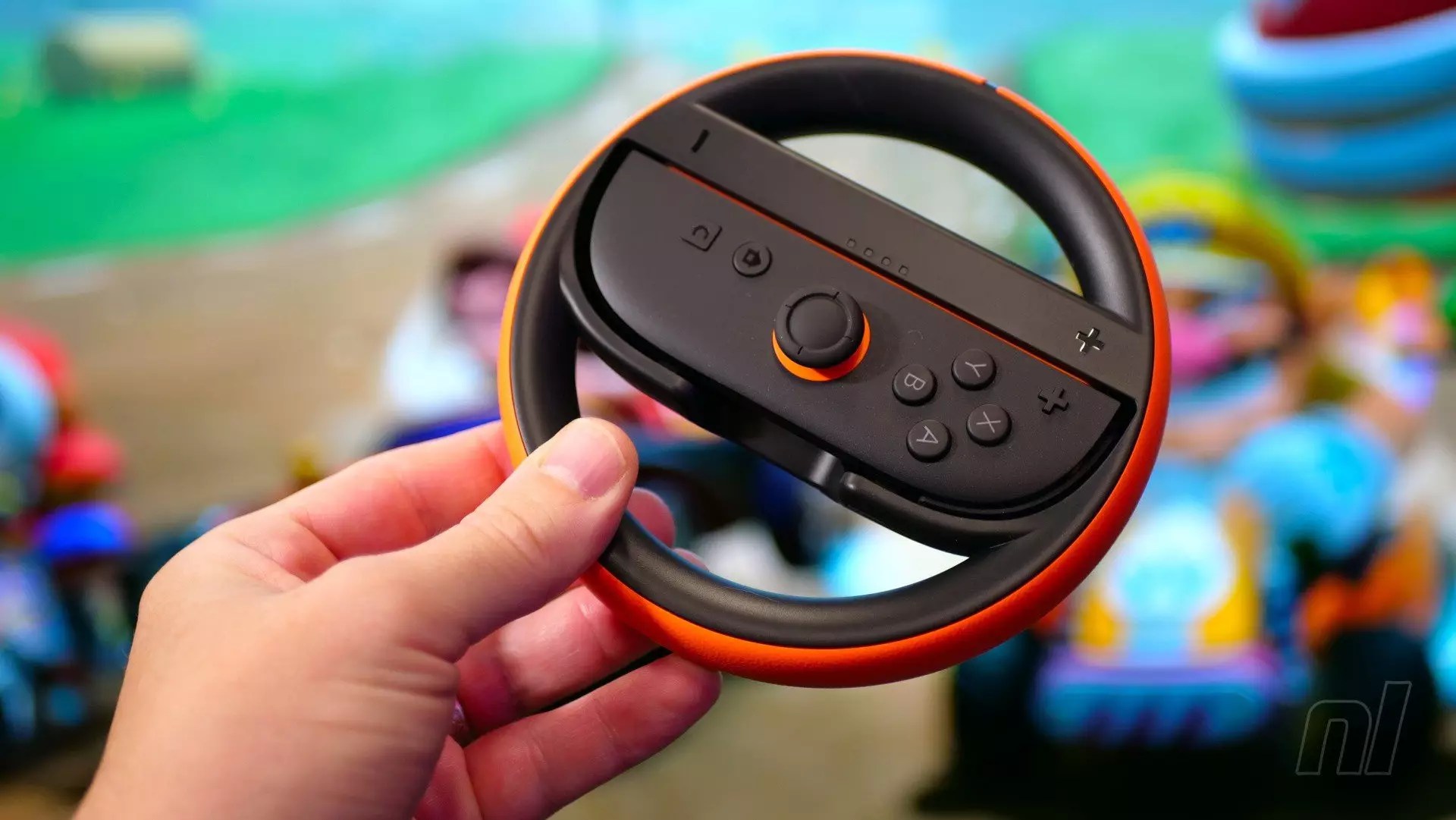In the world of gaming, accessories often walk a fine line between enhancing experience and complicating it. Nintendo’s history with motion controls and peripheral add-ons has been a testament to this ongoing debate. From the infamous Wii Wheel to the latest iteration designed for Switch 2, these gadgets often promise immersion but frequently fall short of the precision that serious gamers crave. Yet, the true value of these accessories isn’t solely in their technical prowess but in their ability to foster a sense of playful engagement. They serve as gateways to spontaneous fun rather than tools for dominant competition.
Nintendo’s series of steering wheels, for instance, exemplifies this duality. The original Wii Wheel, despite its simplicity, became emblematic of casual gaming’s charm—unstoppable in its entertainment potential, yet criticized for its lack of accuracy. Moving forward, Nintendo’s updated wheels for Switch 2 seem to uphold this philosophy. Their aesthetic improvements, such as the colored grip band and sleek, screw-free design, reflect a desire to merge style with function. Despite these upgrades, the core problem persists: imprecise control methods make these peripherals less suitable for players chasing precision or competitive records.
Design Innovations and Practical Limitations
The redesign for the Switch 2 emphasizes convenience. The upgraded wheels accommodate larger Joy-Con controllers, and magnetic attachment simplifies the setup—just click and play. The attention to detail, like unobtrusive buttons mimicking shoulder triggers, shows a dedication to making the experience intuitive. However, this minimalist approach hardly addresses the inherent shortcomings. The act of “driving” with a floating wheel remains a novelty rather than a performance enhancement. The lack of firm attachment or guide rails means your turns are often more interpretive than precise, especially for experienced players.
This casually playful intention reflects Nintendo’s broader strategy: to appeal to a wider audience that values fun over flawless execution. The primary target isn’t the professional gamer but the child, family, or casual enthusiast seeking smiles and shared memories. The difference is critical. For these users, the tactile sensation of steering, even if imperfect, adds a layer of engagement that simply pressing buttons or thumbsticks can’t fully recreate. When you remove the pressure of perfect control, the focus shifts to laughter, surprises, and social bonding.
Cost-Effective Entertainment for All Ages
Perhaps most striking is the affordability of these accessories. At around £16.99/$25 for a pair, they represent a low-cost gateway to multiplayer chaos. The budget-friendly nature of the wheels democratizes access; suddenly, hosting four-player Mario Kart sessions becomes accessible to families and friend groups without breaking the bank. This affordability enhances their appeal—not as tools to weaponize skill but as catalysts for inclusive, lighthearted fun.
Moreover, the setup process is straightforward, encouraging even less technically inclined players to jump in and participate. This ease of use amplifies the social aspect of gaming, emphasizing participation over perfection. The novelty of turning a plastic wheel while racing delivers enough amusement to justify their existence—especially in informal, boisterous gatherings where the goal isn’t to set lap records but to enjoy the chaos of mismatched controls and accidental spins.
Challenging Traditional Notions of Gaming Precision
Despite their playful intent, these wheels serve as a reminder of how far gaming can stray from realism without losing its core appeal. They question the primacy of pixel-perfect precision, advocating instead for a more relaxed, playful approach to gaming. In a sense, they democratize the experience, inviting those put off by intense challenges to participate freely.
However, there’s an argument to be made about their limitations. For serious players, these peripherals are more of a hindrance than a help. The imprecision can frustrate, especially when multiple players are attempting to compete on equal footing. Yet, perhaps their true strength lies precisely in that imperfection—reminding us that games are ultimately about enjoyment and shared moments, not always about winning.
Nintendo’s latest wheel accessories may not revolutionize control or redefine competitive standards, but they embody a vital aspect of gaming: the unadulterated joy of play. When approached with the right attitude, they serve as perfect vehicles for spontaneous fun, social bonding, and creating memories that far outshine any leaderboard ranking. Ultimately, these wheels challenge us to reconsider what makes gaming meaningful—it’s not just mastery but the delight of simply playing together.


Leave a Reply